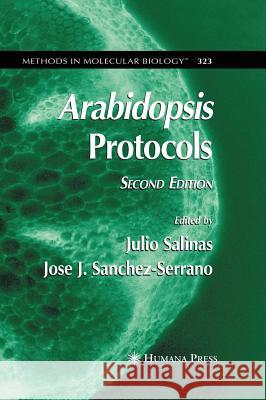Arabidopsis Protocols, 2nd Edition » książka
Arabidopsis Protocols, 2nd Edition
ISBN-13: 9781588293954 / Angielski / Twarda / 2006 / 496 str.
For several decades, Arabidopsis thaliana has been the organism of choice in the laboratories of many plant geneticists, physiologists, developmental biologists, and biochemists around the world. During this time, a huge amount of knowledge has been acquired on the biology of this plant species, which has resulted in the development of molecular tools that account for much more efficient research. The significance that Arabidopsis would attain in biological research may have been difficult to foresee in the 1980s, when its use in the laboratory started. In the meantime, it has become the model plant organism, much the same way as Drosophila, Caenorhabditis, or mouse have for animal systems. Today, it is difficult to envision research at the cutting edge of plant biology without the use of Arabidopsis. Since the first edition of Arabidopsis Protocols appeared, new developments have fostered an impressive advance in plant biology that prompted us to prepare Arabidopsis Protocols, Second Edition. Completion of the Arabidopsis genome sequence offered for the first time the opportunity to have in hand all of the genetic information required for studying plant function. In addition, the development of whole systems approaches that allow global analysis of gene expression and protein and metabolite dynamics has encouraged scientists to explore new scenarios that are extending the limits of our knowledge.











